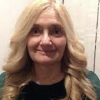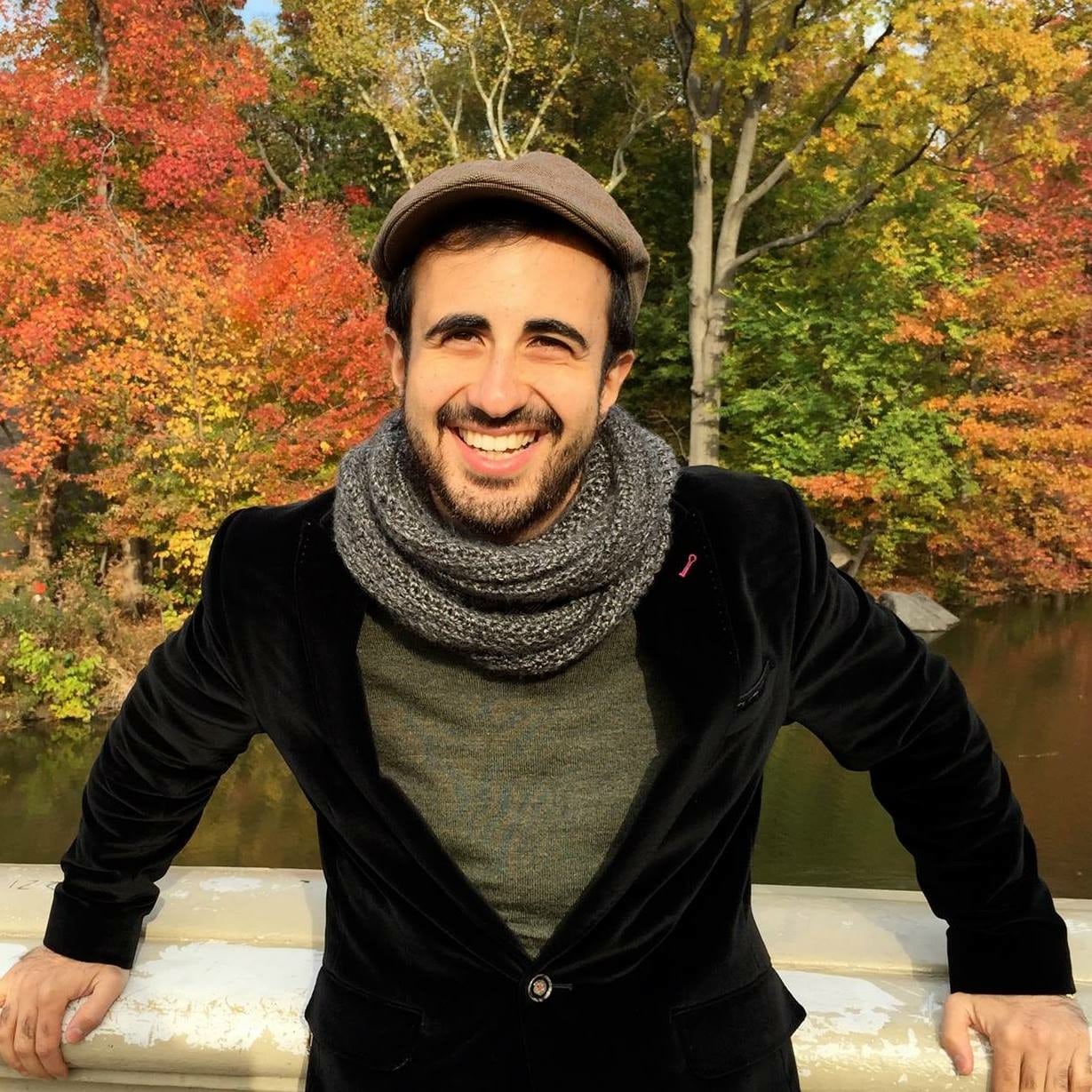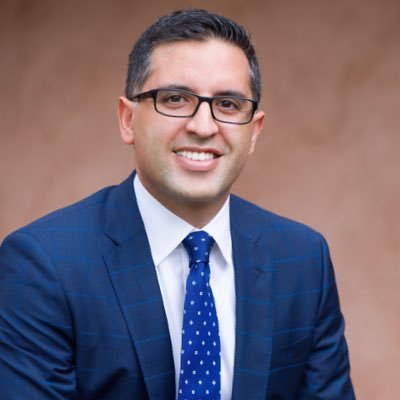
 To elevate the profile, voices, leadership, and place of Sephardi community leaders, scholars, researchers, and activists in the mainstream Jewish communal ecosystem.
To elevate the profile, voices, leadership, and place of Sephardi community leaders, scholars, researchers, and activists in the mainstream Jewish communal ecosystem.
To create a hub of intellectual Sephardic & Mizrahi leadership who can serve as expert ambassadors and partners.
To ensure that Mizrahi and Sephardi Jewish Americans are carefully included in demographic and Jewish communal research moving forward.
To provide rigorous data and recommendations to the larger Jewish community in order to strengthen knowledge, language, and data on Jewish diversity and Sephardi and Mizrahi Americans.
WHAT SEPHARDI AND MIZRAHI LEADERS SHARED DURING PRELIMINARY RESEARCH

Dr. Saba Soomekh, Associate Director of AJC-LA
What is driving the urgency behind the need for this data?"I think the numbers would help to dispel pervasive myths about our communities. I am constantly asked to give lectures on Iranian Jews and Mizrahi Jews and completely lack data on these communities. Firstly, having accurate population data sets and information on voting trends would help solidify my ability to educate on Mizrahi Jews. I know Jewish organizations and government agencies could benefit from those numbers as well as social service organizations. If we know a certain number of Mizrahi Jews are living below the poverty line for example, then we know we need to do real outreach to them."

Manashe Khaimov, Executive Director of (SAMI) Sephardic American Mizrahi Initiative
How has the lack of representation and inclusion hindered Sephardic Jews in the United States?"Lack of data and representation creates a lack of resources and a lack of understanding of the real needs of Sephardic Jewish Americans. Lack of Sephardim in federations and legacy organization board rooms means there is nobody advocating for our communities. This has contributed to a one size fits all model in programming, services, and resource distribution. Even as diversity, equity, and inclusion has become prioritized, our Sephardic leaders are forced to adopt identities that we’ve never used just to be considered for inclusion."

Rena Nasar First, Executive Director of Campus Affairs at StandWithUs
How has the lack of representation and inclusion hindered Sephardic Jews in the United States?"It has forced many communities to be completely and totally insular, closing themselves off from the rest of Jewish life and creating an internal ecosystem. For the Syrian community that I come from, this has produced some amazing things as the community is self-reliant and self sustaining, but think of what could be achieved if we were united to demand better representation in spaces like Israel activism. What if rather than being courted to 'check off a box,' our opinions were valued and seen as necessary?"

Dr. Sharon Nazarian, Senior Vice President of International Affairs at ADL
What sort of data and research is missing or is needed and who would the primary audience for these learnings be?“Issues of race and how we identify racially. How do younger generations self-identify, what is their identity formation? What is our view of American-ness and allegiance to Israel and how is all this changing generationally? For example, at UCLA, leadership of Bruins for Israel is mostly Iranian. All these attitudinal questions are very important and we would benefit from polling to capture generational shifts. At every layer this is needed. The broader Jewish community absolutely has very little information about our community.”

Carole Basri, Mizrahi Jewish Advocate
What sort of data and research is missing or is needed and who would the primary audience for these learnings be?"I’ve always been surprised at how few people realize there were Jews in Arab countries, including other Jews. It’s very important for us to learn about this history, because otherwise it's impossible to really understand global Jewry. As more than half of Israeli Jews are from or descend from Arab countries, you simply can’t understand Israeli Jewry and Israeli politics without understanding the modern history of Jews from Arab lands. This knowledge gap in the United States needs to be filled."

Rabbi Marc D. Angel, Rabbi Emeritus of Congregation Shearith Israel
To what extent, if at all, are Sephardic leaders a part of mainstream Jewish life and in North America?“Overall, we are underrepresented. One the one hand, Sephardim didn’t assert themselves. On the other hand, people didn’t invite us in. Sephardic culture often times becomes all about music and food. We can cook and sing, but we also have brains and intelligence. We’re not just a folk people – we’re a thinking people.”

Ruben Shimonov, Founding Executive Director of Sephardic Mizrahi Q Network
How has the lack of representation and inclusion hindered Sephardic Jews in the United States?“In my opinion, one of the most enduring negative effects of this underrepresentation has been felt in the field of education: Jewish day school education, Hebrew school education, academia (Jewish studies departments, Middle Eastern studies departments), adult education in synagogues and community centers.“

Ethan Marcus, Managing Director of Sephardic Jewish Brotherhood
What is needed for Sephardic Jews to be better served and included in mainstream Jewish life?“Real representation on national Jewish community organizations' boards, professional staff, and in community programming. We also need the Jewish world to stop tokenizing Sephardi Jews but instead fully include us as equal partners in building the Jewish world together.”

Sam Yebri, Founder of 30 Years After
What do we most need to learn about Sephardic and Mizrahi communities in North America, at this time?"I’d like to know about the socioeconomic issues in our communities, especially as a result of Covid. What are the levels of poverty and where are the gaps in social service safety nets, particularly for the elderly and low income families. Are vulnerable Sephardic and Mizrahi Jews receiving social services from Jewish agencies or are they falling through the cracks because they’re not Ashkenazi?"

Jacqueline Feldman, Founder and Director of Sephardic Jews in DC
As a Sephardic Jew, do you feel represented and included in mainstream Jewish communities across America? How yes? How not?"No. I had to form my own Sephardic organization for young professionals due to the lack of representation in the greater Jewish community. I find that mainstream culture sees Judaism as bagels/lox and Woody Allen caricatures. Sephardic Jewish culture does not really get represented or discussed in American Jewish spaces. The rich and diverse history and traditions of Sephardic and Mizrahi cultures is often marginalized or erased entirely."

Adam Eilath, Head of Ronald C Wornick Jewish Day School
What are prevailing misconceptions, stereotypes, or lack of knowledge regarding Sephardic Jews in the United States?“That all North African and Middle Eastern Jews are Sephardic. That we are all Jews of Color. That none of us are Jews of Color. That nothing happened between 1492 and 1948 for Jews in the Middle East and North Africa. That representing us using food and music makes us feel included. I could go on and on.”

Rena Behar, President of Seattle Sephardic Network
What is needed for Sephardic Jews to be better served and included in mainstream Jewish life?"Large Jewish institutions need to acknowledge Sephardic observances as complete and not merely "condiments" for a predominantly Ashkenazi experience. Unaffiliated Sephardic Jews need access to digital resources and to cultural and religious experiences. If an egalitarian Sephardic synagogue were established a greater number of young Sephardic people would be served."
